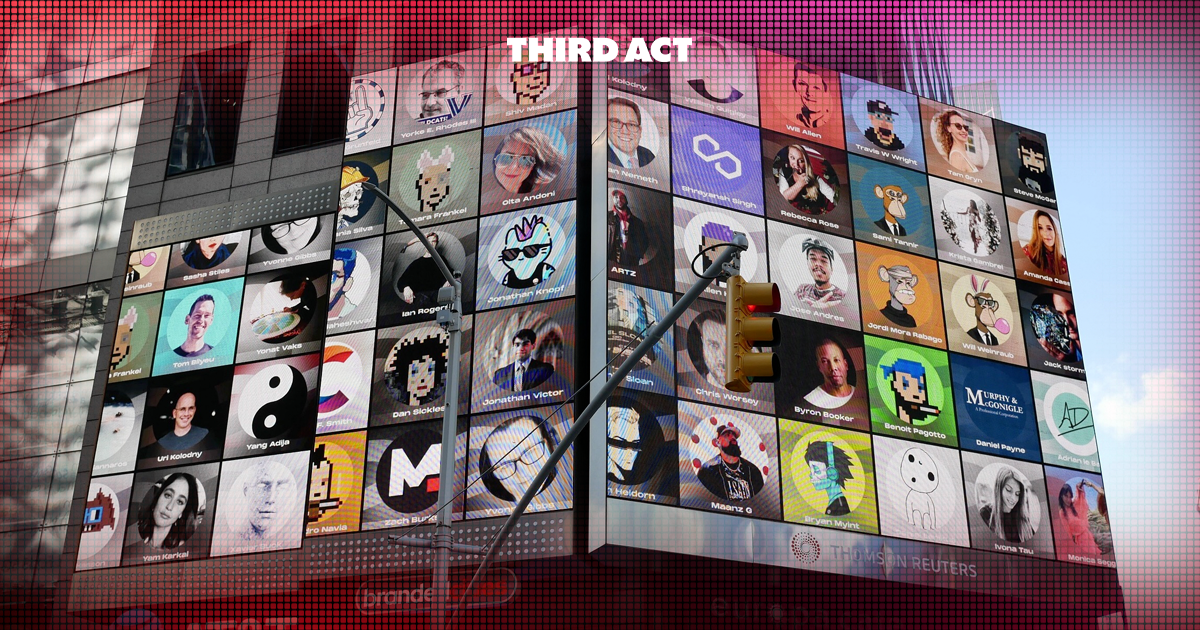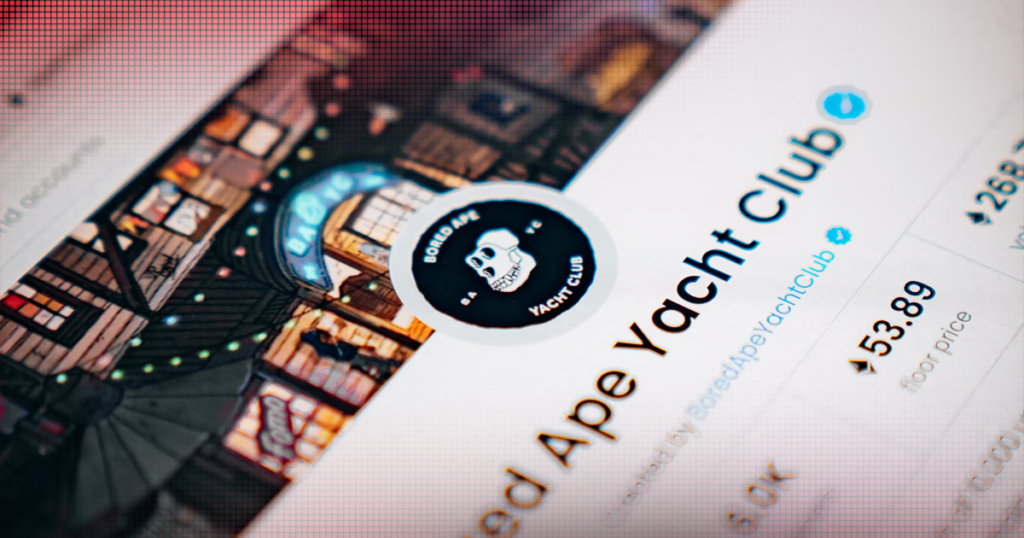

When most people think of NFTs, they think of the big sales. The tens of millions of dollars spent on images that exist solely online. What exactly makes NFTs so special that they bring in so much money? Asked more plainly, and perhaps more brutally: What’s the point of NFTs?
Okay, so that sub-heading is a bit misleading. This isn’t really a big lie per se, but it is a big misunderstanding. So while that subheading isn’t necessarily in line with the truth, it’s actually an artistic statement, an allusion to the misleading headlines about NFTs that constantly trend on Twitter.
Those misleading headlines make people think of million-dollar sales when the word NFT is mentioned. While those sales certainly exist, and a $91.8 million sale is very very real, it’s not really the norm.
In fact, most NFT sales actually come in at under $200. Of the $25 billion of volume traded last year, 50% were under that $200 mark. And when you look at specific marketplaces, prices become even more reasonable.
NBA Topshot, the NBA’s NFT (that’s a lot of acronyms) marketplace sees an average sale of under $50. And Third Act, theatre’s first NFT marketplace (fewer acronyms) positions their NFTs to sell at around the same price as physical theatre merch.

Of course, no one who reports on NFT sales is purposefully lying. It’s just that NFT Sales Actually Affordable is a way less sexy headline than, say: Artist BeepBoop Sells One Hundred Billion Dollar NFT of a Cartoon Monkey Butt.
See, that’s a headline people want to click on (maybe). Depends if you’re a fan of BeepBoop or think he sold out.
But the truth is, NFTs are actually pretty affordable. Don’t get it twisted. $200 is still a pretty penny. This means that NFTs are, no doubt, digital luxuries. But they’re not so luxurious that the layman can’t afford them.
But that original question still remains. Why in the world are people buying NFTs? Why do they want to spend $200 to $91.8 million on them? And what exactly is the point of it all?
NFTs can be sorted into three categories:
Art
Utility
Governance
The art category covers a lot of ground. Anything can be considered art. So, that’s why every NFT falls into one of the three aforementioned categories. Because if it doesn’t fall into the other two, it can be chalked up to, “Someone, somewhere, thinks this looks cool and wants to buy it.”
Art is a nebulous, subjective thing. Very hard to define. What you consider art, we, the AI that writes these blog posts may not consider art.
QUICK ASIDE: Just kidding about the AI thing. Or are we?
One of the best examples of art’s subjectivity is a painting titled, White on White by a Soviet/Ukrainian artist, Kazimir Malevich.

The painting, pictured above, is exactly what its title says it is. It is white on white and that’s that.
Now, there’s a whole AP Art History lesson plan that we could do about whether or not this is art. Because – as a junior in high school would write in their essay – anyone could have, theoretically, put white on white. AKA, this took no talent. But the counter to that is the talent is coming up with the idea, and this is considered art mainly because no one else did it first.
But this is not AP Art History. This is a blog post on an NFT marketplace. So, the point of mentioning White on White is merely to point out the fact that paintings like it sell for tens of millions of dollars.
Someone somewhere thinks it’s cool. They consider it art. Does everyone consider it art? No. Does everyone have to consider something art for it to be art? Not at all! People value different things in different ways. The person who pays $10 million for a canvas with some white paint on it may not understand why another person would buy a pair of sneakers for over $1 million.

The point is, people view certain things as valuable luxuries. Others may not view them the same way. Everyone’s into different stuff. Let people enjoy things. After all, it’s not your money.
The second reason people buy NFTs is utility.
While there is no right answer to the question of what makes NFTs special (or what’s the point of NFTs) this is what comes to mind as the “correct answer.”
NFTs can be imbued with utility in different ways. One example would be purchasing a ticket for a live theatre performance and having that ticket be an NFT. All that would mean is that a record of the ticket’s ownership and transaction journey would be on the digital ledger. In this case, the utility of the NFT is that it gets you into that performance.
And NFTs can do a ton of other things too. They can be used in healthcare to track prescriptions and keep patient records. They can be used in real estate to keep records of contracts.

This category really challenges people’s notions of what an NFT is and can be. Because when people think of NFTs, they think of Bored Apes and Cryptopunks. But in reality, anything on a digital ledger that is a unique one-of-one (i.e. a signed contract) is technically an NFT.
Utility is a big factor in what makes NFTs special. But it’s something a lot of people don’t know about. Their usefulness goes beyond just looking cool. And while aesthetics have their own usefulness, it’s not the same as helping theatre productions recoup losses or keeping track of airplane parts.

This last one could technically be part of the utility category. Because, well, it is technically a utility. But it gets its own (brief) section because it is so specific.
NFTs can be used to open up decision-making in art and business to fan and customer bases.
For example, NFTs can be issued to fans who purchase them to support a theatre show in pre-production. In exchange for purchasing the NFT, all holders of said asset could get votes on things like the color of the main character’s tee-shirt, character names, or even the show’s title.
This is the future of fandom. Fanbases having a say in their favorite creator’s projects. Think about how much certain people would pay to vote on what Lin Manuel-Miranda’s next project would be about. Or which song Idina Menzel should sing at the Tony’s.
One of the original questions posed was, “what is the point of NFTs?” Art, utility, and governance are reasons why people purchase NFTs. AKA the point.
But what makes them special?
To answer that question, we return to the art category. At the end of the day, every NFT is different. And the reasons why people value certain NFTs are the same reasons why people value any other luxury item. Because it appeals to them personally.
Okay, so answering the question, “What makes NFTs special?” by saying, “a bunch of different things” is a little bit of a cop-out. But that’s because we’re talking about NFTs generally.
So let’s get specific.
When it comes to Third Act NFTs, there are a ton of different aspects that make them special and unique digital assets. And we’re not just talking about the code on the Hashgraph.
Third Act NFTs allow you to express individuality while joining a community of likeminded theatre lovers. They let shows create memories and moments that fans can own and look back on. And not only that, but they also open up a world of possibilities when it comes to connecting with your favorite Theatre Makers.
But the best part about Third Act NFTs, and what really makes them special, is that a percentage of the profits go back to Theatre Makers for the life of the NFT. That means from the original auction to every subsequent sale, Third Act NFTs help Theatre Makers make theatre.
And while every NFT marketplace is different. And every NFT means something to someone in a non-fungible way. Giving back to theatre is what makes Third Act NFTs special.

